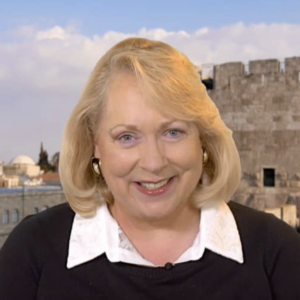A sinkhole opened up on Herbert Samuel St. in Tel Aviv on Sunday morning, adjacent to the beach.
בולען נפער ברחוב הרברט סמואל, סמוך לחוף הים בת"א
— ישראל היום (@IsraelHayomHeb) April 20, 2025
צילום: דוברות המשטרה pic.twitter.com/laCFEdBELL
Sinkholes are not uncommon in Israel. In September 2022, a sinkhole opened up on the Ayalon Highway in Tel Aviv, and no injuries were reported. But in July, a sinkhole opened up under a swimming pool next to a private house in the town of Carmei Yosef, killing a 32-year-old man.
This also happened in November 2022, when a sinkhole opened up in a subterranean parking lot in Hod Hasharon, central Israel, forcing the evacuation of three apartment buildings.
In January 2023, a sinkhole appeared again Hod Hasharon, swallowing up a car as the occupant miraculously escaped.
In June 2021, in a Jerusalem parking lot adjacent to Shaarei Tzedek (the gates of mercy) Hospital, several cars were swallowed up and fell into a sinkhole. Emergency services were called to the site, and after a search, it was determined that the cars were empty when they fell into the hole.
Visions of the earth suddenly opening up and swallowing evildoers epitomize the Biblical concept of divine retribution. This was seen most clearly in the case of Korach and his rebellious crowd.
And the earth opened her mouth and swallowed them up, and their households, and all the men that pertained unto Korach, and all their goods. Numbers 16:32
The Bible contains several references to sinkholes.
A sinkhole is prominently featured in the Torah portion of Korach. The portion contains the Biblical account of a rebellious congregation being swallowed up by a sinkhole after challenging the leadership of Moses and Aaron.
In the story of Korach, sinkholes result from a challenge to Moses as the leader of the Jewish people.
According to Jewish tradition, Korach and his followers did not die after being swallowed up by the earth, but remain alive, awaiting the end of days when they resurface. A Midrash related by the Talmudic commentary called Tosafot (Kiddushin 31B) describes how this is connected to the appearance of the Third Temple. The Tosafot asks why Psalm 82 is defined as a ‘Mizmor’, a joyous song, when the subject matter is the tragedies accompanying the destruction of the Temple. The Tosafot explains that Asaf, a descendant of Korach, saw the salvation of his ancestor in the destruction of the Temple and Israel.
According to Jewish tradition, Korach and his followers did not die after being swallowed up in the earth (Numbers 16:32). They remain in Sheol, waiting for the arrival of the Messiah to release them.
A Midrash related by the Talmudic commentary called Tosafot (Kiddushin 31B) describes how Korach’s punishment is connected to the appearance of the Third Temple. Tosafot asks why Psalm 82 is described as a ‘Mizmor’, a joyous song, when the subject matter is the tragedies accompanying the destruction of the Temple. Tosafot explains that Asaf, a descendant of Korach, saw the salvation of his ancestor in the destruction of the Temple and Israel.
This is compared to a maidservant who went to draw water from the well and whose pitcher fell into the well. She became distraught and began to cry – until the king’s maidservant came to draw water carrying a golden pitcher, and it too fell into the well. At this point, the first maidservant began to sing.
“Until now, I didn’t think anybody would retrieve my cheap earthenware pitcher from the well,” she exclaimed. “But now, whoever retrieves the golden pitcher, will retrieve mine as well!”
Tosafot explains that the sons of Korach rejoiced when they witnessed the gates of the Second Temple sink into the ground. They understood that God would not allow the Temple to remain destroyed forever. The sons o Korach reasoned that when God came to rebuild the Third Temple, he would also save them.
It is for this joyous song, which the Sons of Korach will sing at the Third Temple, that Asaf, who was from the family of Korach, sang a joyous Mizmor.







